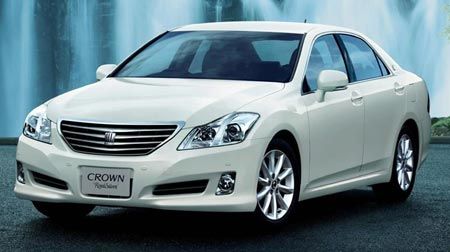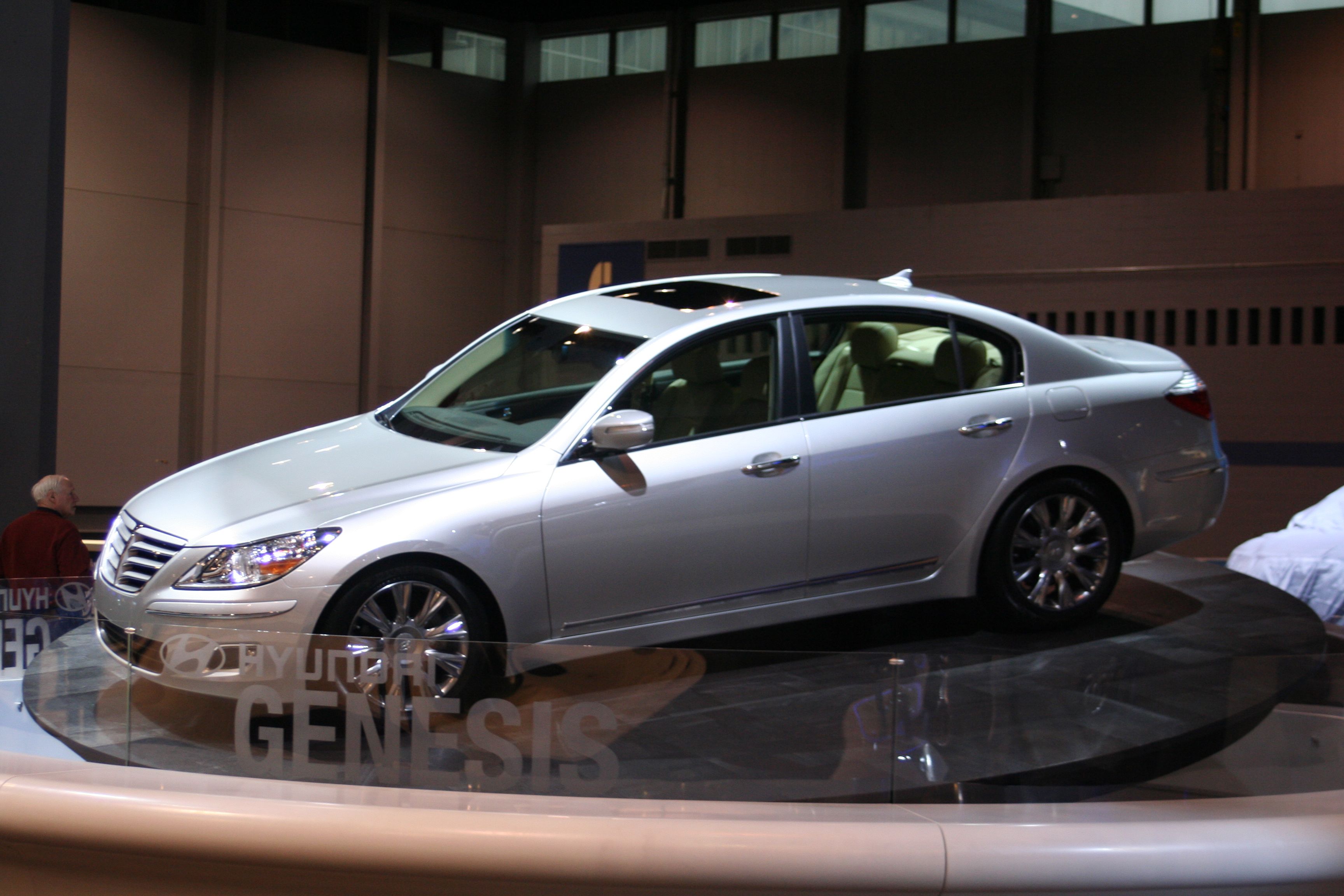When you set out to copy a car, it’s nothing new. Indeed, Toyota has been knocking off German cars for years, first Mercedes-Benz and most recently BMW. That’s one of the reasons the current Camry is so unattractive – it looks like a cheap 5 Series. It’s one of the reasons the current top-line Lexus looks like a very expensive copy of a 7 Series.
But, here’s a truly impressive feat: Hyundai has managed to knock of a car that hasn’t even been introduced yet, the new Toyota Crown – the big Toyota for the home market that is just now being launched in Japan.
The new Hyundai Genesis looks very, very much like it.
Or, maybe it’s the other way around. The Crown looks like the twin of the Genesis – although expensive cars aren’t usually styled to look like inexpensive ones.
Of course, both seem to take their genetic inspiration from a past S Class Mercedes – formless ovoid shape, with drooping nose and tail and slabby sides.
Asian nameplate designers seem to fear originality.
Certainly, there are exceptions. The Nissan 350Z isn’t a clone, though the overall impression that its designers had spent some time staring at an Audi TT is hard to avoid. But, that’s OK. From a certain angle, the TT is a direct copy of the sloping backlight of a Porsche 911. Sometimes, a designer is forced to use a line previously used elsewhere, because it’s perfect.
But, the Hyundai Genesis and the Toyota Crown appear so similar that they might have been cast from the same mold.
There was a time when General Motors was guilty of “brand engineering,” of making the same car for several brand with only different name badges to distinguish them. They even made expensive cars look like less expensive cars, to the detriment of the pricier model’s sales. (Why by a Buick Riviera when its appearance is identical to the Somerset at half the price?)
But, at least you could tell a Chevy from a Ford from a Dodge. Usually, anyway.
Today’s Asian nameplate vehicles suffer from the same malaise, except it’s industry wide.
When you see a Mercedes-Benz, you have no doubt about its brand identity. Whether or not you care for the design, BMW models are easily identified as BMW’s. The latest offerings from Cadillac complete an effort to make that brand’s identity both distinctive and immediately apparent.
Asian-nameplate brands, however, seem to studiously avoid developing their own identity.
Prowling around the Lexus exhibits at the Detroit and Chicago Auto Shows, one could not help but be impressed by the precision of engineering and assembly (though it no longer holds exclusive title to the crown in fit and finish). Lexus is a car that may appeal to your sense of quality and you may even desire one as a status symbol. But, it is not a car that will be the object of automotive lust.
Hyundai missed a golden opportunity with the Genesis when it elected to follow the pattern of amorphous Asian-nameplate styling.
The Genesis is aimed, according to its manufacturer, directly at the 5 Series and equivalent products, but for $35,000 instead of $50,000. To that end, it comes equipped with a 375 hp V-8 and an interior that displays all the usual touches designed to establish luxury. It doesn’t have the fit and finish of the 5 Series, but it doesn’t have the price tag, either. While it doesn’t compare to the BMW head-on, its specifications more than compare to other cars in the $35,000 price range.
Hyundai put so much effort into this car that it could have produced a car that turned heads, a car that would establish the identity of the brand as something other than “me-to.” Designing a beautiful car does not take more money or time or engineering effort than designing one that is bland. It merely requires the commitment to do it and the confidence to take the risk.
The body double cars are what results when the manufacturer isn’t willing to make that commitment.


